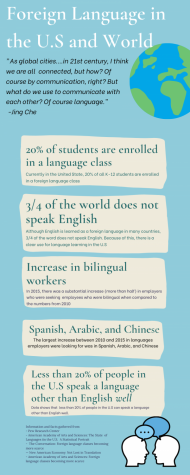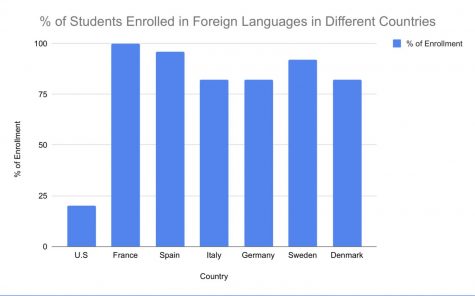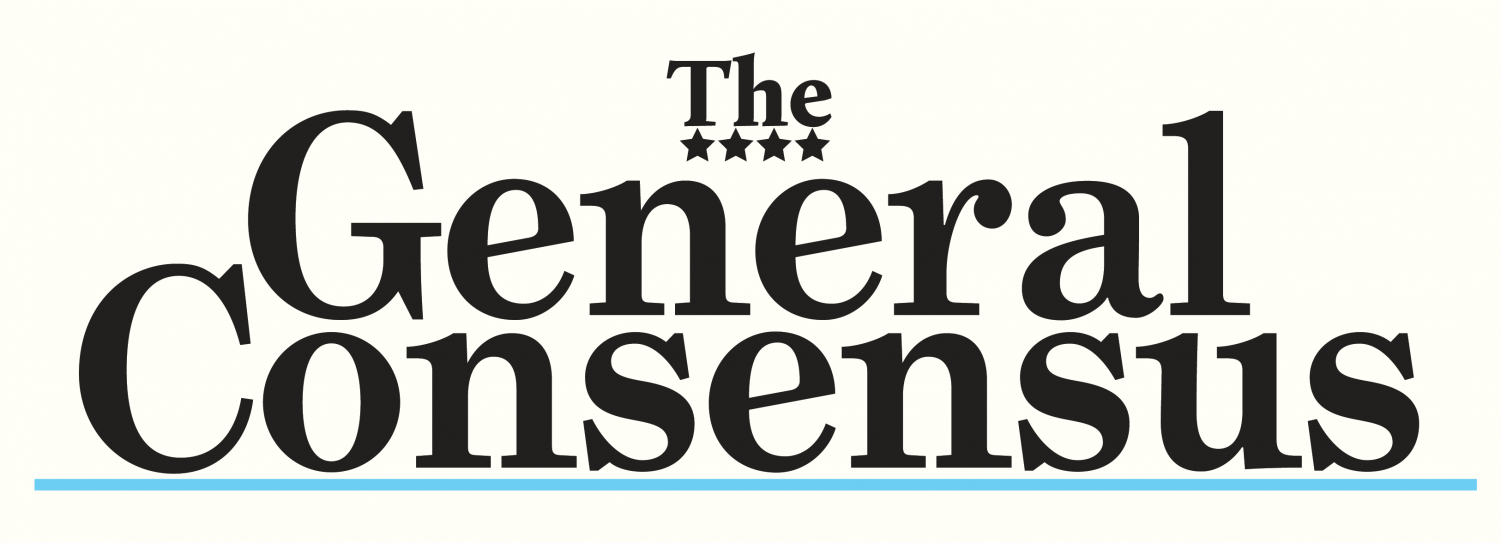Language Acquisitions’ Role as the Bridge Towards a Globalized Country
Exploring Why Learning a Second Language is Important
HWRHS students enjoying a trip sponsored by the Spanish program at Hamilton Wenham
At the Hamilton Wenham Regional High School, students are required to take a language course until the tenth grade. Junior year is the point where students have the opportunity to decide whether they want to continue to participate in a foreign language class.
In the United States, language learning has not been deemed a core class in K-12 education. Unlike English, math, social studies, and sciences, foreign language classes are not offered in all schools in the nation. In fact, only about 20% of students K-12 are currently enrolled in a language class.
In the HWRHS school community, it is easy to see language classes as a background to what have always been perceived to be the more important subjects. However, the Mandarin and Spanish programs’ presence in the school community indicates a value towards language learning. Their importance may be deeper than what many members of the school community see.
When asked about the value of the Hamilton-Wenham language classes, Kevan Sano, the director of the language program at Hamilton Wenham, said the two courses “opens up students’ eyes to different cultures, different ways of life. Even within each of those two languages [Mandarin and Spanish] depending upon the region, or the country where you are speaking that language, that within itself has a whole cultural nuance as well.”
Sano points to culture as one of many important aspects of the Spanish and Mandarin courses offered at Hamilton Wenham.
The Intellectual Value of Language Learning
The Lead with Languages organization said that research shows learning a foreign language has benefits in the development of more creativity, better critical-thinking skills, listening skills, concentration, memory, and mental flexibility.
An article from The Whitby School pointed to a study conducted by Dr.Thomas Bak, who works at Edinburgh’s School for Philosophy, Psychology, and Language Sciences, to highlight the cognitive benefits of language learning. The article found that “young adults proficient in two languages performed better on attention tests and had better concentration than those who spoke only one language.”
Dr.Bruce Baird, the director of East Asian Languages and Cultures at UMass Amherst, stated that “it’s pretty well documented that learning a new language really does hone your skills. It enables you to understand your own language better because you begin to see how another language works, and that in turn enables you to understand how your own language works. But also, that process fires different synapses in your brain and makes you more capable …. so people who learn extra languages get some positive intellectual benefit beyond just the acquisition of another language in terms of shaping their mind and working the muscle of their mind.”
Jing Che, a Mandarin teacher at Hamilton Wenham High, agreed with Dr.Baird, saying that “all of these differences [between English and foreign language] kind of have a restructuring process in your brain, which helps your brain to think differently. Sometimes you may think more creatively if you have a different perspective to view things around you, or to view people’s different cultures. It is going to help you develop more understanding of the different situations or different cultures, and different peoples.”
The mental processes required for language learning lead to enhanced skills. Whether due to complex patterns or tones, as Che stated, or repeated practice of memorization, the brain develops and increases skills that are practiced in the exposure to new languages.
Foreign Languages and the Workforce
A study by the New American Economy linked bilingualism to characteristics sought after by employers. The study said that “employers were seeking far more bilingual workers in 2015 than they were in 2010.” That increase is nearly 400,000 jobs.

Baird said that “it’s well documented that college students who learn foreign languages go on to have higher lifetime earnings, and the reason they have higher lifetime earnings is because they’re able to put those skills to use, and people want that skill.”
Sano noted how being bilingual can even help to have advantageous qualities on a global scale. She stated “we’re living in a global society, with the internet, with the ease of travel, where the rest of the world is multilingual. For Americans to be monolingual, you’re not competitive. If you don’t speak a second, or maybe even a third language, you can’t compete with people around the world.”
Given the widespread relations between countries, and diversity within the United States, it is easy to understand the statistics behind job opportunities and their connection to bilingualism. The report from the New American Economy noted how increased exportation of goods and diversity in citizens explains why companies are searching for people who are fluent in different languages.
Language and its Connection to Culture
Behind every language in the world, there is a culture that the language stemmed from. Engaging in a language program doesn’t have the sole purpose of communicating with individuals who speak a different language, but also understanding the way of life behind any respective region of the world.
Che pointed out how “speaking a different language, or even better multiple languages, definitely helps you broaden your horizons, because you can explore totally different cultures from yours and meet different people through learning their languages. I think it definitely can enrich your life experience, at least your travel experience, if you can communicate with the local people in their languages.” Che later stated “I think language and culture are intertwined. Language gives you the window for you to see that culture and people there.”
Language is the primary means through which people can explore regions of the world that would otherwise remain unknown to them. Language is the tool that can open doors to new perspectives and peoples, fostering a cultural awareness.
Che went on to say “learning a different culture actually helps you. It is kind of like a mirror to see your own cultures as well. You will develop more of an appreciation of your own culture and appreciate the effort people make to help you have the life you are having right now.”

Sano provides insight into how languages not only help to understand cultures, but people individually. She notes how language learning introduces students to different types of people, saying “It’s incredibly important. Especially in light of our own country and the situation that there’s just so much hatred on every level: racism, religious hate, gender identity. It’s just everywhere. I think if we knew more about each other, maybe we wouldn’t have all of those problems. But I think we need to expose our students and our children to multiple things. We need to get people out of Hamilton-Wenham, we need to know that there’s a bigger world out there and we shouldn’t be afraid of it.”
Being a Member of the Global Society
Historically speaking, relations between different nations and cultures have led to a multitude of ideas being exchanged. Language in the modern world can still serve as a way for nations to work together.
Baird discussed how “all cultures come up with insights into the world, and people in different places come up with insights into the world. To the extent that we can either learn to understand them or do the work of translating them back to our own world, which takes, of course, language knowledge. . . . we can broaden our global expertise by doing that process.”
Language is the tool through which cultures can gain from one another. Knowledge and ideas can be passed between nations and peoples, as long as successful communication is achieved.
Sano said “we may be different on the outside, but we all bleed the same blood. Our insides are similar. We need to realize that. We need to realize that we all have the same basic needs of food, water, love, and feeling safe. And we need to talk to each other. We shouldn’t be afraid. We need to find ways to embrace others who are different, and sit down and talk to them and get to know them.”
A modern example of worldwide benefit from international connections is the fight against the Covid-19 pandemic. Che said “as you can see right now, we need combined effort to prevent the pandemic from happening. What do we need to have those combined efforts? It’s communication around the world.”
Connecting to different nations can also foster a more inclusive society. Nicholas Ristaino, a social studies teacher at the Hamilton Wenham High School, said “how comforting is it to travel and encounter someone who can help answer your questions or provide you with information? Now think about being able to do the same for someone in their native language. That helps build an empathetic world where people seek to communicate, understand, and appreciate one another.”
From the pandemic response, to conversing with someone in their native language, there is much to be gained from interactions with foreign countries and cultures.
The Future of a Second language in the US
As previously stated, only 20% of K-12 students are enrolled in foreign language courses. At the college level, only 7.5 percent of students were enrolled in a foreign language class in 2016. Outside of the classroom, less than 20% of Americans speak a language, other than English, well (data as of 2018).

Despite the compelling reasons that shed light on the importance of language learning, many countries far bypass the United States’ enrollment.
Data from Pew Research center shows that European countries have higher numbers of enrollment. For example, 100% of K-12 students in France are taking a foreign language, 96% in Spain, and 82% in Italy.
Sano noted that “the fact that we [Hamilton Wenham] have language in seventh and eighth grade every single day of the week, we are lucky. Because there are lots of communities that don’t have that.”
Baird added on by saying the U.S “ is lagging behind, which is unfortunate because it’s the moment when we need the languages the most because we are so connected. It’s also the moment when there’s intense financial pressure to do away with language acquisition in high school or in college.”
The United States can become a country with high rates of bilingualism, if it is made a priority. Sano stated “the administrators, the people in power, need to say ‘this is a priority and we need to do this’. And the community also needs to be supportive of that.”
Come fall of 2021, Hamilton Wenham will not only have sixth grade language reinstated, but also a language committee to direct the path of the language program.

Julia Tsappis, a sophomore at Hamilton-Wenham, is the Co-Editor in Chief of the General Consensus. This is her second year as a member of the paper. She...







